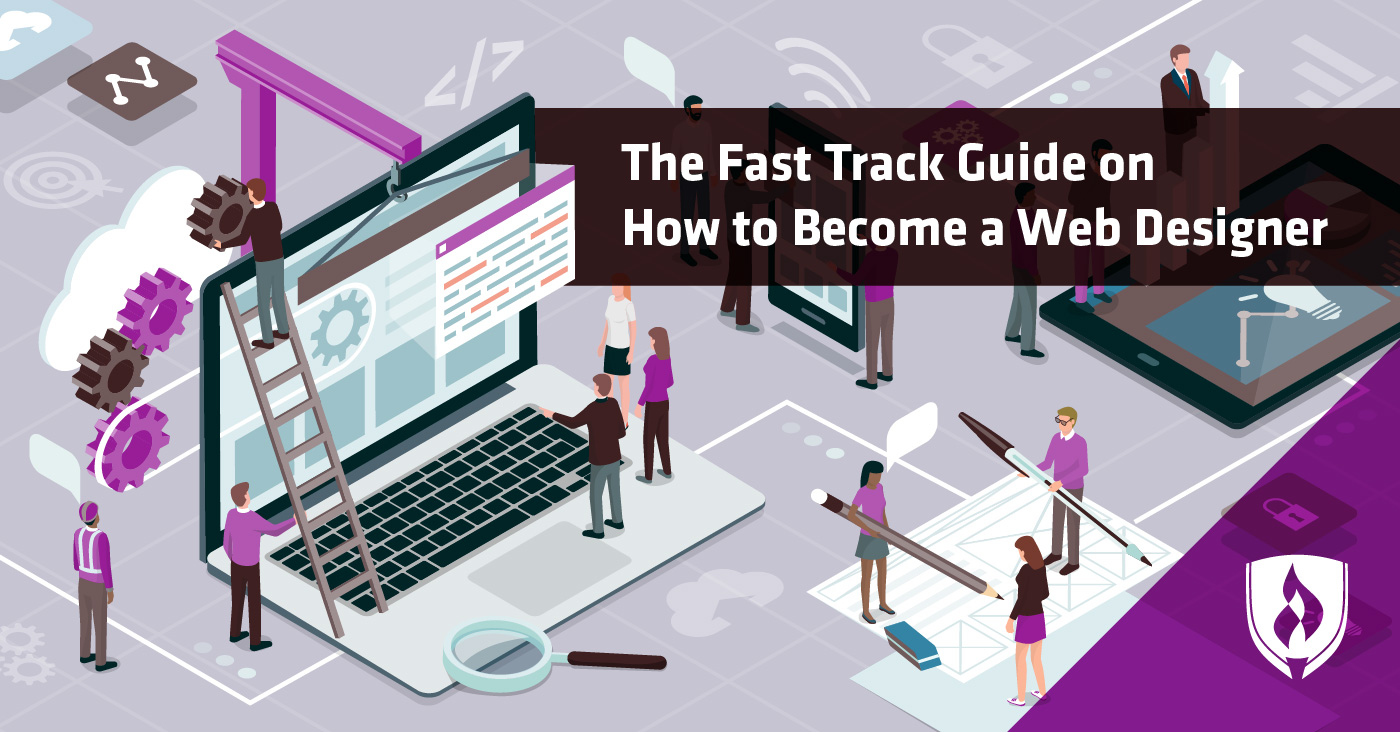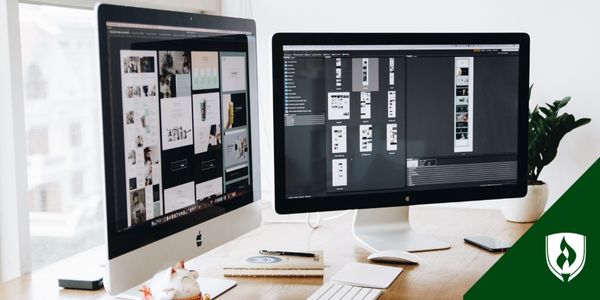
Have you ever visited a website where the design was so stunning you just had to sit and stare in awe for a few seconds? Where every aspect of the site, from the layout to the font, looked like a meticulously crafted piece of art? Where it almost hurt you to return to an inferior website? Where you couldn’t help but wonder who the heck made it and what they did to make it so spectacular?
This is precisely the appeal of becoming a web designer. You’ll spend hours agonizing over the details of a website in pursuit of that sweet spot of visual appeal and functionality. It can be tedious and tiresome but when it finally comes together, it’s all worth it!
If you’re wondering how to get started in this challenging yet rewarding field, you came to the right place. We enlisted Jennifer Ayotte, School of Design Dean at Rasmussen College, to help us create THE comprehensive guide on how to become a web designer.
What do web designers do? And what skills do they need?
The line between web designer and web developer has blurred substantially. In the past, designers were strictly focused on the visual layout and presentation of a website. Today’s web designers should have at least a solid grasp of HTML, CSS, Javascript/jQuery and PHP. While designers might not be responsible for coding the entirety of the website in these languages, knowledge of the languages and their limitations will help when it comes time to implement a design.
“If you don’t know how to communicate with a developer who’ll make your designs come to life, you’re going to be too difficult to work around in an organization,” Ayotte says.
Learning those languages will cover the “web” portion of being a web designer, but learning the necessary design skills is equally important. For starters, it’s imperative that you are well-versed in Adobe Creative Suite software such as Photoshop, Illustrator, InDesign and Dreamweaver. These programs will allow you to create all of the necessary graphics and visual materials needed for laying out a mock-up of a site design.
Ayotte says in addition to these tech-based skills you’ll need an understanding of general design principles like color theory, use of space, typography and how these factors effect website accessibility and overall user experience.
If you think being a web designer just means you sit behind a computer in solitude all day, you’re mistaken! While technical proficiency is very important, web designers still need to learn to be effective communicators. Ayotte says many clients will have a good idea of what they want their website to achieve but may struggle articulating it clearly. It’s up to you as a designer to ask the right questions and listen carefully before embarking on a new project.
The flip-side is also true—when communicating with clients it’s important not to overwhelm or confuse them by going overboard with jargon or unnecessary technical details. Having the ability to translate your ideas into Layman’s terms will make everybody’s lives easier.
What is the salary and job outlook for web designers?
The salary of web designers can vary substantially based on the skills they possess and their job duties. Some web designers’ responsibilities align closer with graphic designers, while others who are more proficient in the coding and the implementation of a design fall under the umbrella of web developers.
The projected growth for the graphic design field is 7 percent, while the web development field is expected to grow 20 percent from 2012–2022.* As a rule of thumb for web designers, the more proficient and experienced you are in coding and web development, the more in-demand you’ll be—which typically translates into higher wages.
What education is required to become a web designer?
It’s true—not all web designers need a college education to work in the field. There are several examples of talented and industrious people individuals who were able to teach themselves the technical skills needed to become a web designer.
However, foregoing a college education can add an extra layer of frustration during your job search. Whether you like it or not, companies like to minimize risk in hiring and with the high competition for entry-level design jobs, a college education can serve as a differentiator. Earning a degree can also show to employers that you are serious and dedicated to your craft.
To help illustrate this point, we used real-time job analysis software from Burning-Glass.com to identify 44,820 entry-level web design job postings over the past year.** An analysis of the required education levels listed for these jobs revealed that 88 percent of employers prefer candidates to have at least a bachelor’s degree. While some of those employers may be open to waiving that requirement for a designer with the right mix of experience and skills, it may be an uphill battle for a candidate without a college degree.
What about the portfolio?
The beauty of web design is that, unlike many professions, you can easily show—not tell—potential employers what you’re capable of in your portfolio of work. A portfolio website is a great way for web designers to show off their skills by highlighting any previous work or projects they’ve created.
“A strong portfolio included in a resume is critical because it gives a job applicant the ability to showcase their skills when—up to that point—they probably wouldn’t have to ability to even speak to a potential employer,” Ayotte says.
You may have to get creative and be willing to sacrifice when building your portfolio as a new designer. Ayotte says you shouldn’t be afraid to seek out projects or work that might not be as lucrative when starting out. She believes as a rookie designer it’s more important to have a foundation of quality work to show to potential clients or employers than to worry about the bottom line.
“When building your portfolio it’s important to seek out as much freelance or pro bono work as you can,” Ayotte says. “Local organizations like churches and non-profits are a good place to start—every organization has a need for a website and often times these are the places that don’t have the budget to hire experienced designers.”
Not only does offering volunteer design service to local organizations gives students professional experience but it also shows future employers they are involved in their communities, according to Ayotte
Get on the fast-track
Are you ready to get started on designing the Internet’s next masterpiece? The Rasmussen College web and interactive design program can help you acquire the base of knowledge and skills necessary to get on the fast-tack to building an impressive portfolio and landing your dream job!
*Bureau of Labor Statistics, U.S. Department of Labor, Occupational Outlook Handbook, [information accessed May 2015] www.bls.gov/ooh/. Employment conditions in your area may vary.
**Burning-Glass.com (Analysis of web designer job postings, June 1, 2014 – May 31, 2015)




